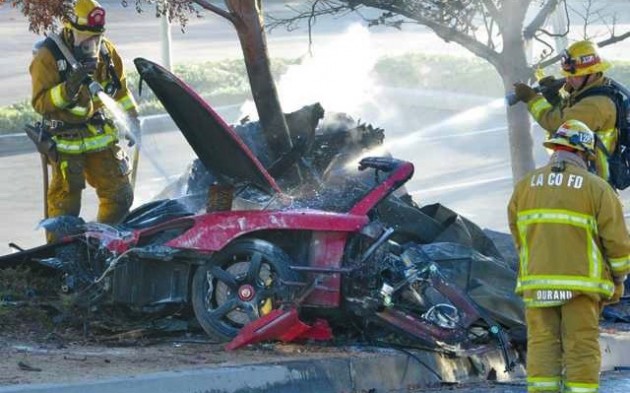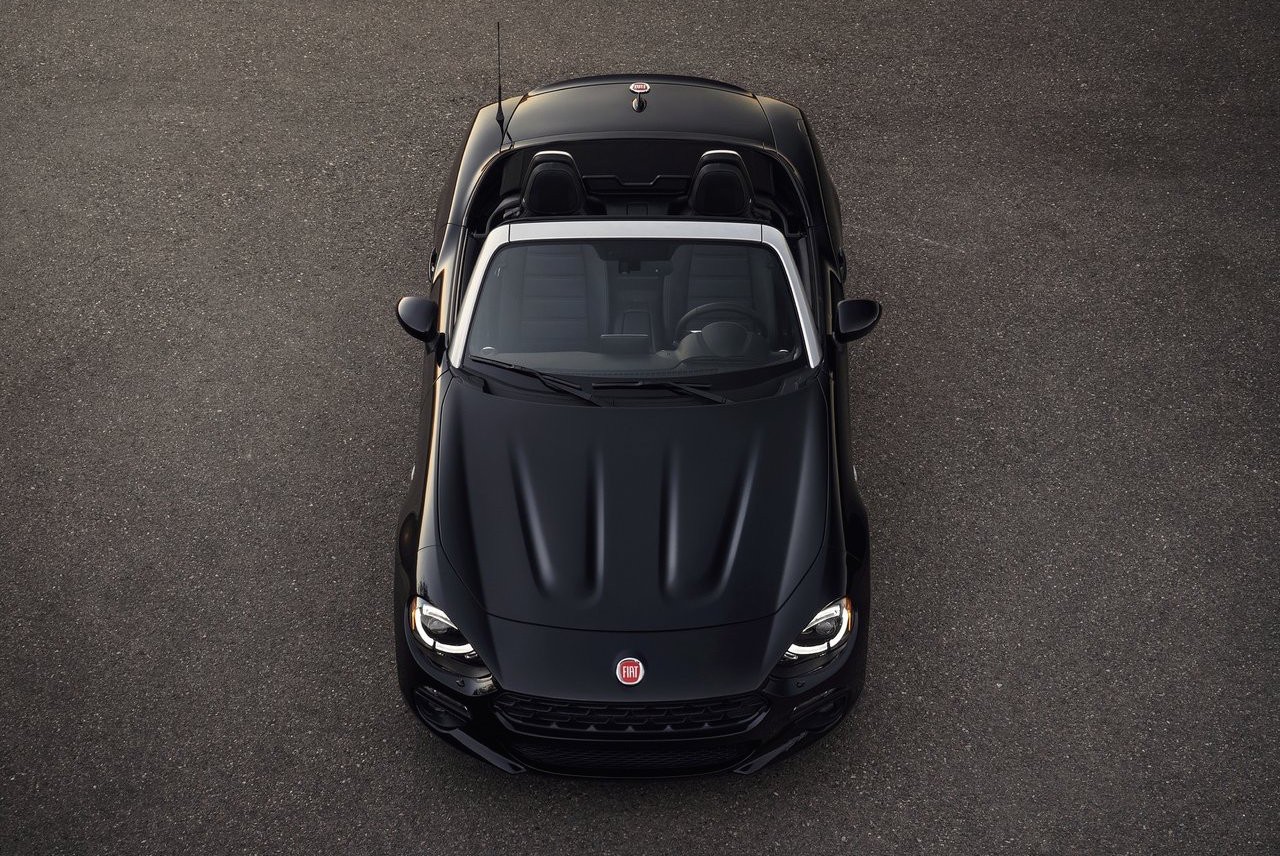Paul Walker Senior is suing Porsche for the death of his son, the Hollywood star known his roles in Fast & Furious movies, following a tragic accident in a modified Porsche Carrera GT in 2013.
According to Walker Sr. the Porsche Carrera GT that his son was riding in lacked adequate safety features that could have saved the life of his son.
This brings the number of cases filed against Porsche for this one event up to three. Meadow Rain, Paul Walker’s daughter and the wife of driver Roger Rodas, have filed previous cases for negligence and wrongful death against the German manufacturer.
The absence of a stability control system, breakaway fuel line and side-door reinforcements are among the list of safety equipment that Walker Sr. asserts could have saved Paul’s life. Jeff Milam, attorney was quoted as saying:
“If Porsche had designed the car to include proper safety features, Paul would have survived, he would be filming Fast & Furious 8, and Meadow Walker would have the father she adored.”
Paul Walker was killed in November 2013 when the Porsche Carrera GT spun, struck three trees and caught ablaze in Santa Clarita, California.
The first investigation carried out by Los Angeles County Sherriff’s Department concluded that speed, not mechanical failure was responsible for the wreck.
There remains confusion as to the particulars of the case, with Meadow Walker’s case claiming the incident occurred at speeds of 101-114km/h, while investigators claimed the speeds were more in the area of 151km/h.
Porsche has also claimed in a court filing that the Carrera GT in question was not stock, and was not properly maintained, which it claims may be partially responsible for the crash.


I sincerely love performance vehicles, and know that no manufacturer designs a vehicle expecting it to crash, or even worse to burn on impact. However, the risk exists … It is a known possibility .. and … it is a terrible fact that,statistically, it will happen, and the consequences are tragic and irreversible.
I specialize in “Risk Assessment and Control” for corporations in the financial services sector for organizations that are as large as Porsche, and they must address risks as mundane as “Privacy”, Computer hacks, and regulatory compliance. Clearly, in my mind, the risks of a collision that killed two people should have been totally predictable by Porsche, and there are technical and administrative controls that could have mitigated the consequence of a collision of that type,
Ejection seats … properly designed for the circumstances … would have been recommended by any responsible Risk Management assessment. They cost money, but … not that much … there is plenty of profit margin in that great vehicle to support engineering them in.
Its my opinion that Porsche should have foreseen the likelihood of this catastrophic risk and designed in appropriate and effective safeguards.
J Finn
there was this article about 10 things we see in Hollywood movies that wont exist in real life… and Car smashing into something and exploding is one of them – the fuel will break etc. what was wrong with this car then?
Yep, well said James.
I am an electronic engineer that has consulted to AMG, VW (Audi) and others, and I can iterate the same things.
Yes speed was a factor, but the car appears to have been designed and intended to travel much faster than the speeds that are said to have caused the accident.
One could easily compare the Porsche that Walker and Rodas unnecessarily met their fate in, with another top rank (but far less expensive and one with far less profit margin) SUV from the very same manufacturer to see that Porsche are indeed aware of almost all the dangers that a car like that (which Walker and Rodas met their fate in) exhibits.
In fact, some of the top level Porsche SUV’s have engine configurations and/or power and torque outputs that are not too dissimilar to the vehicle in question.
Porsche, in my opinion, knew the vehicle in question was devoid of adequate safety features; but continued to sell it as it was anyway.
One can buy a standard Japanese commuter these days for less than a quarter of the cost of the vehicle in question and be rewarded with almost (if not) all of the safety features;
A) That was lacking in the vehicle that Walker and Rodas met their fate in.
B) Of a vehicle that has – at best – 1/3 of the all round performance (and therefore associated potential dangers) that a Porsche Carrera GT has.
I have no doubt that the possibility was that Rodas may have been “hooning” and/or driving too fast, but I also note that Porsche (aside from how it appears that they have specifically designed the Carrera GT to do such things and/or accelerate/travel much faster than “normal” speeds) do not place acceleration/speed-governers, driver warning lights, and/or other equipment on their sportscars to prevent owners/drivers using all that power.
But even aside from all this . . . . seriously, a car of that automotive stature and capability (particularly one with the engine mounted behind the driver), . . . designed, built, and sold without stability control systems, breakaway fuel lines and without side-door reinforcements???
It’s almost like it’s from a company that would turn a cheek to driver safety and prefer to spend money on cheating pollution tests and destroying the breathable environment for generations to come; in the name of (yet more) profits.
well worded
Why do we continue to blame companies for the ignorance of buyers? While I do feel that companies need to make sure of the safety of their product, where does it end when the said product is misused? For normal driving conditions, this Porsche was like any other vehicles that the government said was street legal. This sports car was purchased for its performance. It was enhanced for even more performance not by the manufacture, but by the owner. I certainly cannot blame a cattle rancher for making me sick if I decide to under-cook my steak unless there was deceit of tainted meat. The driver here is at fault, not Porsche. These lawsuits are for monetary gain and should be thrown out of the court system. I am sorry that these two men lost their lives, truly! However, had they been following the laws of the road, they would still be alive. This “sports” car was truly a street legal race car and when someone buys this vehicle,,, well, that’s why they bought it.
GT is dangerous when driven slowly… yet how many times do you drive 110km/h and feel like – GT broke down at this speed will my povo pack car survive that? and yet we do survive… so what was really wrong with this car even at 150km/h speed?
We
blame the motor vehicle companies because they have the knowledge, means, and ability
to make their cars safer and didn’t despite the fact that the car in question
was clearly designed to travel fast and operate in demanding situations.
In legal terms this means that the motor vehicle companies are liable.
If you, me, we or a motor vehicle company know of a potential or otherwise
danger and fail to make it safe, then (for such negligence) you can be held
liable.
It’s as simple as that.
However, in Porsche’s case they not only knew of a potential or otherwise
danger and failed to make it safe – but they also had the financial and
physical means to easily make it safe and still didn’t.
The Carrera – like some other Porsches – has a history of being not the most
safety oriented super/sports car.
Porsche (like any manufacturer) have a responsibility to their customers and
society to make safe/complaint cars, and when they fail to do that they are
liable; even in circumstances where the driver may be exceeding the speed
limit.
Years ago some of the early Porsche’s used to easily tailspin due to the weight
differential between front and rear caused by the rear mounted motor that sat
over and/or aft the rear axle. Many accidents occurred before Porsche finally
applied their elegant fix; mounting lead/metal behind the front bumper.
An example of the above can also be realized by just the below considerations.
A) Since the Carrera has no side-door reinforcements that means that drivers
and passengers could easily be killed whilst they are stationary at a set of
traffic lights. Porsche fit side-door reinforcements to their other vehicles;
so why not the ones that possibly pose the greatest requirement for them?
B) Break away fuel lines cost less than $200.00. They can be considered for the
purpose of this discussion to operate similar to break clean brake hoses that
are used in MotoGP and also on street motorcycles, as they allow the brake
hose/line holding the fluid to be separated or “broken” without the
fluid leaking and/or allowing air to enter the line.
Given the cost of the Porsche Carrera and the fact that both VW and Porsche
race in several high profile racing events and on multiple occasions throughout
every year, it’s fair to assume that they would have known about break away
fuel and brake lines.
Put it all together with the fact that Porsche fit side-door reinforcements and
stabilizing devices to their other vehicles, and you have a company that (all
as they were designing cars to pollute the atmosphere and defeat each
respective countries pollution/economy tests that they were imported to) not
only have previously rejected the reality of the dangers of poor design in rear
engine vehicles – but also knew of a potential or otherwise danger and failed
to make it safe when they actually had the financial and physical means to easily
make it safe.
Therefore Porsche are to some (if not a great) extent liable.
And that extent is defined by the liability related to . . . . Rodas’ excessive
speed and perhaps the Carrera’s modifications (if indeed they contributed to
the accident; a point that is not known) . . . . subtracted from the total
amount of liability.
Which is most likely why Porsche were very keen to assist the police with their
investigation and report into the cause of the accident; which conveniently
failed to uncover all the above points.
What other motor vehicle company is on the scene of an accident so quickly and
does that?
Porsche knew of all the dangers, yet, clearly they didn’t bother nearly half as
much and/or half as quickly as they did to assist police at the scene of the
accident with massaging the accident investigations.
Even if (by some incredible suspension of logic) the Carrera GT could not have
been (pre or retro) fitted (by Porsche) with electronic stability control
systems that defeated and/or minimized horizontal vehicular rotations; it could
have easily been made so the vehicle didn’t burst into flame upon an impact of
the kind that happened.
Finally, the Carrera GT was actually designed to travel at the speeds the
accident was said to have occurred, therefore Porsche had a responsibility to
ensure it was as safe as possible under those conditions.
Porsche, instead, fit almost all the above safety features – that are missing
from the Carrera GT – to their other (no super car) vehicles.